Estates management 2016/17: Summary of consultation responses
On 22 February 2017, we issued a consultation to review the Space Measurement Section of the EMR. The consultation focused on particular entities according to feedback we received from an EMR Space Measurement Technical Group held in January 2017, as well as from AUDE and the HE Space Management group regarding their use of the space measurement data.
The aim of the consultation is to review the usage of the data collected, assess the cost-benefit and evaluate the guidance in this section.
We received 62 responses to the consultation. Thank you to all the respondents for the time they took to complete the consultation. Your comments were both helpful and insightful.
Entity: Gross Internal Area - D11
Fields: Non-residential GIA (SMGIANR)
Residential GIA (SMGIAR)
Total GIA (SMGIAT)
Total GIA commercial space (SMGIACT)
Is the data for this entity used internally by you as a provider (e.g. to analyse your estate, to generate KPIs)? (If yes, could you provide some examples of by whom and what for?)
84% of providers use the data from this entity internally, while 16% do not. The main internal purposes of this data include: determining estate costs, analysing and managing space, estate planning and development, as well as insurance purposes. In addition, persons listed as using this data include: Directors of Estates/Facilities, Space Managers, Sustainability Teams and Senior Management.
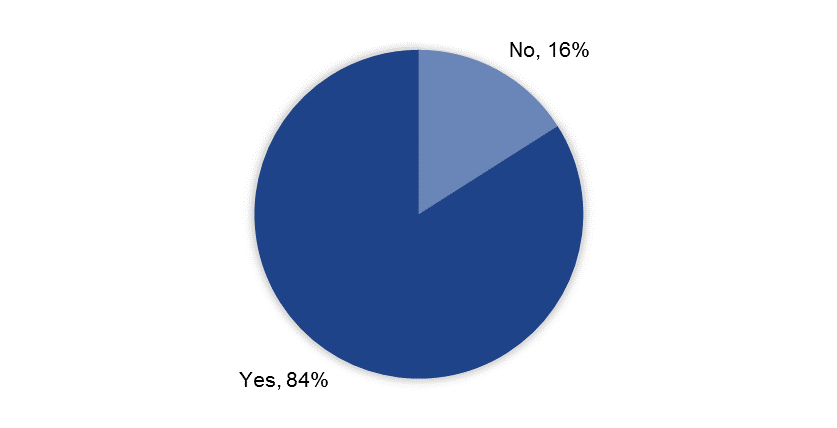
Is the data for this entity used for external purposes (e.g. for sector benchmarking by you as a provider, for data analysis by other external bodies)? (If yes, could you provide some examples of by whom and what for?)
60% of providers stated the data from this entity is used for external purposes, while 40% stated it is not. By far the most often stated purpose this data is sector benchmarking. Other purposes stated included: Tribal and for use by external consultants. Providers did not give examples of external bodies using this data.
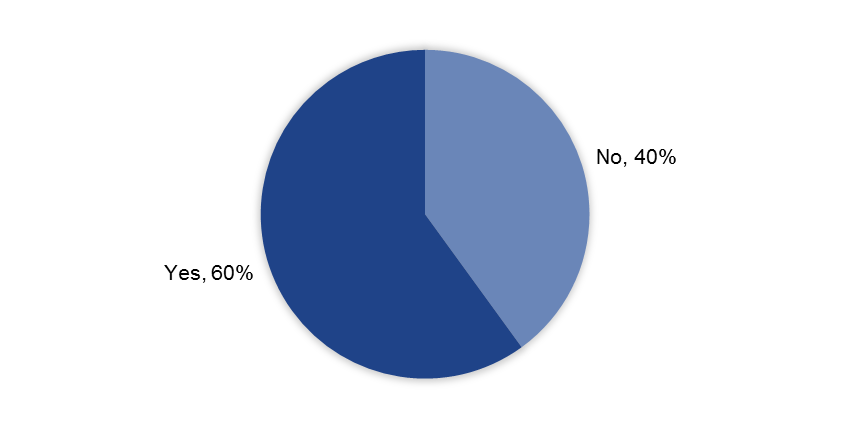
Assessing the benefit and effort of collecting this data.
Respondents were asked to rank from a scale of very low to very high the benefit and effort of collecting this data. This allows us to understand the impact of collecting this data. The diagram below represents the average of the responses received from each question regarding the benefit and effort involved. The chart shows that the benefit is much higher than the effort involved in collecting the data.

Are there any fields you would add or remove to/from this entity?
Over half of providers explicitly expressed that they would not add or remove any fields from this entity. 20 providers did not provide any comment. There were otherwise a small number of suggestions from the remaining providers. The main suggestion, as expressed by 8 providers was to remove GIA Commercial space.
Do you have any suggestions of how the guidance for the entity or fields could be improved?
Several providers stated that they were content with the current guidance. The most often cited suggestions for improvement related to commercial space. There were several requests that the definition for commercial space is better clarified and that examples of commercial activity are given in the guidance. Several providers also queried the use of GIA and NIA, given the introduction by RICS of IMPS. One provider suggested that the inclusion or omission of voids should be better clarified.
Entities: Net Internal Area - D12 & Method of floor area measurement - D13
Fields:
- Total method of floor area measurement (SMMFAT)
- Non-residential NIA other (SMNIANRO)
- Non-residential NIA total (SMNIANRT)
- Non-residential NIA vacant (SMNIANRV)
- Research NIA total (SMNIARET)
- Research not offices NIA (SMNIARE)
- Research offices NIA (SMNIAREO)
- Residential NIA (SMNIAR)
- Support NIA associated with catering (SMNIACS)
- Support NIA learning centre space (SMNIALC)
- Support NIA total (SMNIAST)
- Support not offices NIA (SMNIAS)
- Support offices NIA (SMNIASO)
- Teaching NIA total (SMNIATET)
- Teaching not offices NIA (SMNIATE)
- Teaching offices NIA (SMNIATEO)
- Total NIA (SMNIAT)
- Total NIA commercial space (SMNIACT)
Which method of floor area measurement do you use?
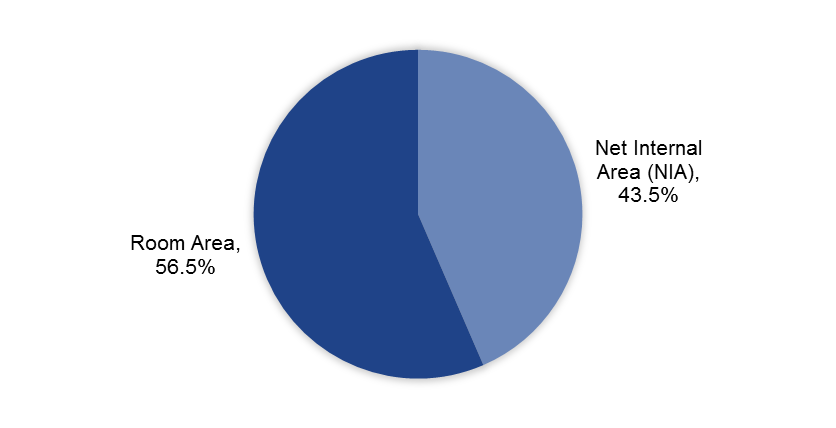
56.5% of providers use Room area as measurement, while 43.5% of providers use Net Internal Area (NIA).
Is the data for this entity used internally by you as a provider (e.g. to analyse your estate, to generate KPIs)? (If yes, could you provide some examples of by whom and what for?)
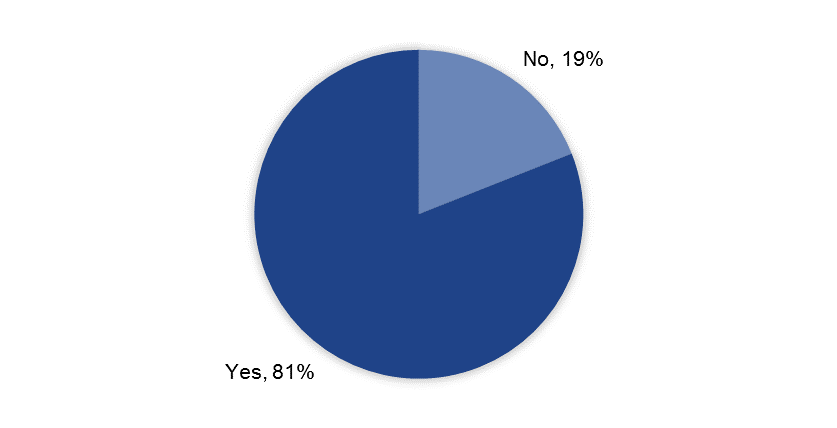
81% of providers use this data for internal purposes, while 19% of providers do not. The main internal purposes for the use of this data include: planning and development, analysing and managing space, determining costs, KPIs, as well as internal benchmarking. Only one provider provided examples of people who use the data in this section, this included the Space Manager, Director of Estates and Facilities, as well as Sustainability Manager.
Is the data for this entity used for external purposes (e.g. for sector benchmarking by you as a provider, for data analysis by other external bodies)? (If yes, could you provide some examples of by whom and what for?)
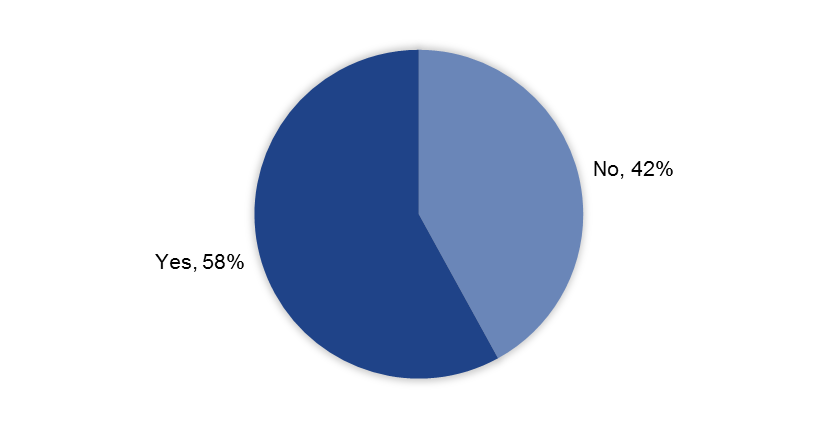
58% of providers stated this data is used for external purposes, while 42% stated it is not. The main external purpose for the use of this data by a significant number of responses was sector benchmarking. AUDE was the only cited external body who providers stated use this data.
Assessing the benefit and effort of collecting this data.
The chart shows that the benefit of collecting the data is high, while the effort is moderate. The benefit therefore somewhat outweighs the effort of collecting the data.

Are there any fields you would add or remove to/from this entity?
Just under half the respondents stated that they would not add or remove fields from this entity.
A number of providers suggested removing fields: Support NIA associated with catering (SMNIACS), and Support NIA learning centre space (SMNIALC) since the data in these fields is not used by these providers. Two providers proposed removing Total NIA Commercial Space (SMNIACT), one of these providers explained that the field was too ambiguous. In contrast, another provider suggested including all commercial space, since commercial space costs money to maintain and run and it generates income, just as teaching space and research space do.
One provider suggested removing NIA Vacant (SMNIANRV) as they can find it challenging to determine whether a room is truly vacant or not. In addition, a provider expressed that they find that teaching/research/support splits don’t align well with TRAC. They also find it hard to apportion spaces with multiple uses for example teaching and research, which are used for these purposes in varying loads. Another provider stated that spaces are becoming more flexible and capturing just one sole use is difficult. Several providers stated that they had difficulties splitting space between teaching and research and suggested that these fields are collected instead as “Academic offices”. One provider also wanted to add “Academic Support Office” so it can be benchmarked with peers.
One provider suggested adding a field to collect student social learning/common rooms, since this space is receiving more and more attention and they feel it would benefit them to be able to benchmark their provision across the sector. One provider also proposed adding a field to distinguish space that is “Out of use for refurbishment”, from just being “Vacant”.
Do you have any suggestions of how the guidance for the entity or fields could be improved?
A number of providers did not have any suggestions as to how to improve the data. There were two key issues for those providers who did make suggestions. Firstly, several providers proposed that the guidance needed to better clarify which spaces are returned under which fields and provide a variety of examples of these spaces accordingly. Secondly, some providers questioned why HESA states RICs as the preferred method for measuring floor space.
The EMR Space Measurement Technical Group proposed using a standardised methodology using room area basis for this entity, in order to increase comparability between HE providers. Room area basis was preferred over the RICS methodology, as it was seen to be more appropriate for the users of the data, and the RICS definition is based on space in commercial properties. Would you support a move towards collecting NIA by room area basis?
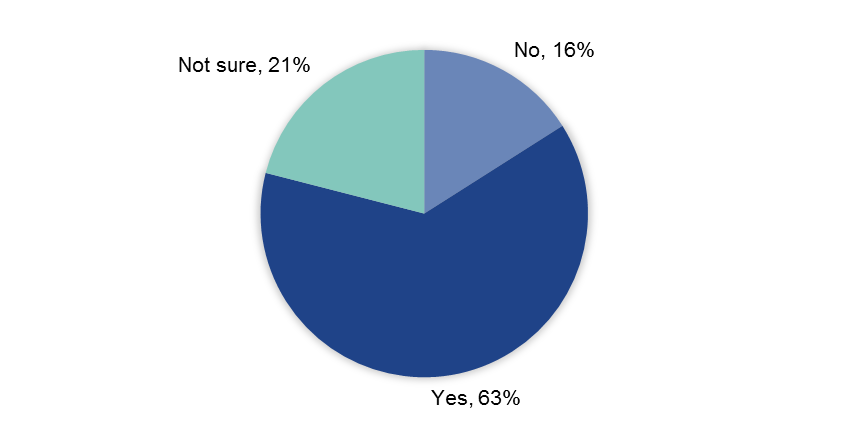
63% of providers expressed they would support using a room area methodology, while 16% would not. 21% are unsure. The key reasons of the providers who support the move reason that they feel the Room Area method is easier to calculate and is more useful for spatial planning, since it shows the useable area of a space. Room Area is also easier to calculate in old, irregular shaped buildings. Many providers also felt that the data would be more comparable using this method. Providers who did not support the Room Area method stated they are content with using NIA, which they use on a day-to-day basis for spatial planning, allocation and reconfiguration and to calculate costs, so it is more relevant to them. One provider felt that it went against the property industry standards for space measurement which are based around RICS standards. Those providers who are unsure mainly stated they required further information.
If you do not use the Room Area method currently, what difficulties might you have in moving towards a room area based methodology?
Most providers stated that moving towards a room area basis would result in significant, time, effort and resultant cost in recalculating their current room areas. A few providers expressed that they would need to redesign their internal systems to adapt with this methodology. It would also impact the accuracy of their existing surveys and records.
Commercial space should be excluded when returning fields in the NIA entity. The current definition does not clearly define what constitutes a commercial space and so the EMR Space Measurement Technical Group discussed a new definition. An initial proposal for this is: A commercial space is regarded as one where the occupant of the specified space is not the HE provider or a subsidiary of them.
Would this new definition help you to more easily identify commercial space?
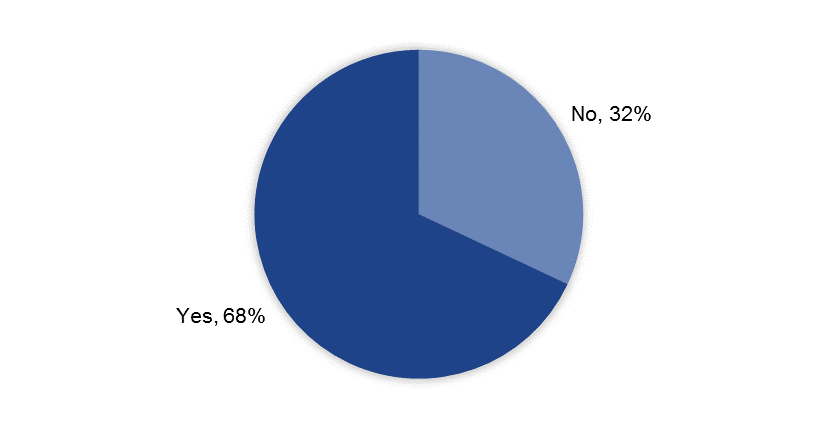
68% of providers stated that the revised definition would help them identify commercial space better, while 32% of providers stated that it would not.
Is there any further clarification you would need to identify commercial space?
Providers raised a number of questions in light of the revised definition. Key points included: defining what constitutes a subsidiary in more detail, the length of occupancy, clarifying what to do with vacant commercial space, and whether non-profits and charities fall under commercial space. We will consider these and other points raised and clarify the guidance where relevant. Several providers also stated the need for examples to be given.
We would like to provide some real-life examples of commercial space in the EMR guidance. We would therefore be grateful if you could provide some examples of what you classify as commercial space and your reasons why these are regarded as such (this could also help with refining the definition for commercial space).
We received approximately 50 responses from providers, which outlined a whole range of different commercial space examples. We will review the examples provided, using these to refine the definition where appropriate and use these as a library for examples when updating the guidance.
Entities: Frequency rate - D16 & Frequency rate calculation - D45, Occupancy rate - D18, Occupancy rate calculation - D46
- Fields: Teaching not offices frequency rate percentage (SMTEFRP)
- Teaching not offices frequency rate survey date (SMTEFRSD)
- Teaching not offices hours per working week (SMTEHW)
- Teaching not offices frequency rate calculation (SMTEFRC)
- Residential occupancy rate percentage (SMORRP)
- Teaching not offices occupancy rate percentage (SMORTEP)
- Teaching not offices occupancy rate survey date (SMORTESD)
- Teaching not offices occupancy rate calculation (SMTEORC)
Is the data for this entity used internally by you as a provider (e.g. to analyse your estate, to generate KPIs)? (If yes, could you provide some examples of by whom and what for?)
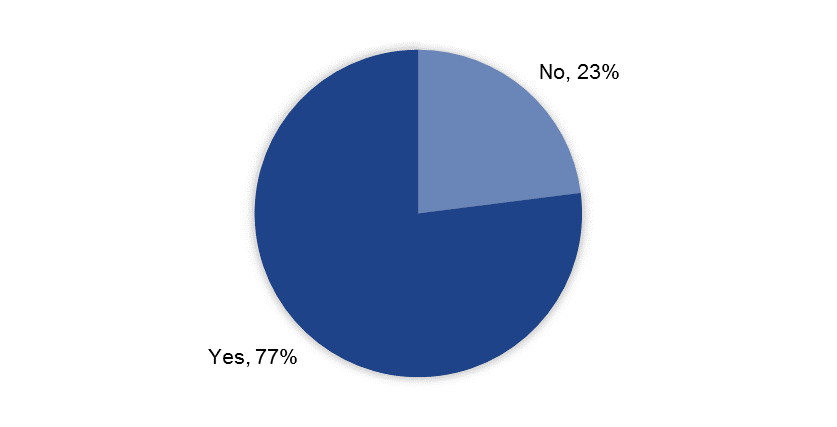
77% of providers use this data for internal purposes, while 23% do not. Providers outlined the main purposes for this data include: utilisation and space management, timetabling, estates planning and development, reports to senior management and internal benchmarking. No specific examples of who uses this data were given.
Is the data for this entity used for external purposes (e.g. for sector benchmarking by you as a provider, for data analysis by other external bodies)?
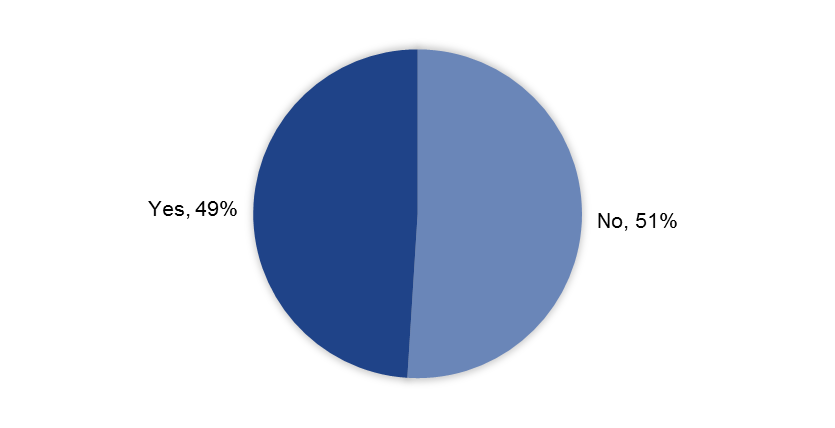
49% of providers stated the data in this entity is used for external purposes, while 51% stated it is not. The overarching purpose for providers using this data is for sector benchmarking. A few providers did express their concern however, over the consistency in data between providers.
Assessing the benefit and effort of collecting this data
The chart shows that the effort of collecting the data in these entities is high, while the benefit is moderate, therefore the effort outweighs the benefit.

Do you have any further suggestions of how the guidance for the entity or fields could be improved? When suggesting improvements, please state which field you are referring to and link explicitly to the current guidance.
Many providers did not have suggestions for improving the guidance. Other providers expressed they were concerned with the consistency of how the data is collected, and that the guidance needs to clarify the method used more. Several providers suggested that only a survey based method should be used and for the guidance to reflect this accordingly. One provider stated that they felt it was impossible for providers to return consistent data for these fields, due to differing methods.
Are there any fields you would add or remove to/from the entities? Please explain why.
Over half of the providers did not provide feedback to this question. Of those who did, there were many who would not make any changes to these entities. Several providers suggested removing these entities altogether, while one provider suggested just removing timetabled and estimated data, and another provider suggested removing residency occupancy rate (SMORRP). One provider proposed adding fields so that flat and tiered spaces could be added separately, while another provider suggested providing departmental occupancy and frequency rates separately.
Which method do you currently use to capture frequency and occupancy rate?
We received feedback from almost all providers on the methods they use to capture frequency and occupancy rates. This included: the percentage of buildings/rooms captured; when and how often in the year provider’s conduct their method; the period of time over which the provider’s conduct it (e.g. on one day, over the whole week); approximate cost. HESA will review these methods to investigate consistency between providers and how guidance can be improved to increase consistency in future.
The EMR Space Measurement Technical group agreed that there is different practice in capturing this data between providers, meaning the data is not comparable between providers. They proposed that this data should only be returned where a survey has been carried out, and guidelines should be brought in to introduce consistency in surveying. Do you support the proposal to only return survey data for these entities?
The majority of providers supported returning survey data, reasoning that the data would be more valuable than timetabled data and it would improve consistency between providers. The providers did emphasise however that it would need to be supported with a standardised methodology to ensure consistency. Providers in support did nevertheless raise resourcing costs as an issue, and one questioned whether the cost would outweigh the benefit. Another provider expressed that they would want to maintain their current methodology as they have invested significant time and effort in developing it. One provider also said they would continue with their own methodology regardless as it suits their internal purposes. Only one provider explicitly stated they were against using a survey method, as it would add a logistical and financial burden to providers not currently using a survey, for little practical benefit.
Entity: Space charging system - D43
Field: Non-residential space charging system (SMNRSCS)
Is the data for this entity used internally by you as a provider (e.g. to analyse your estate, to generate KPIs)? (If yes, could you provide some examples of by whom and what for?)
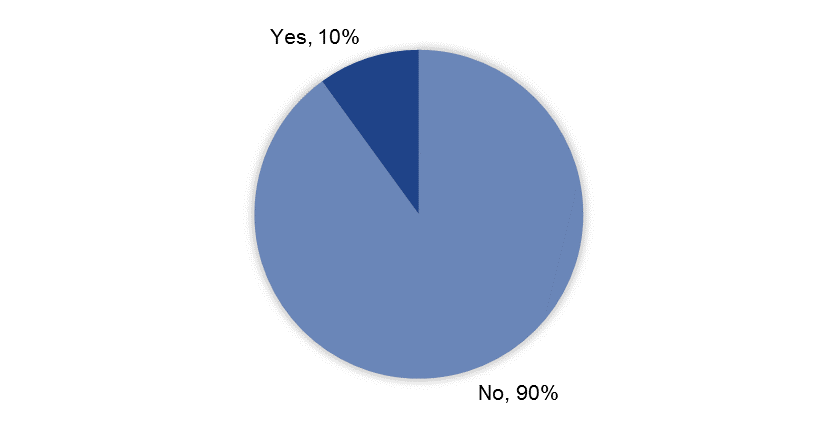
10% providers use this data for internal purposes, while 90% do not. Of the 10% who do use this data, it is used for purposes such as: identifying costs for each building to compare against occupancy; make space charges to Faculties; a measure of department space performance for Estates planning and management. Examples of who the data is used by include: timetabling team, energy management and events.
Is the data for this entity used for external purposes (e.g. for sector benchmarking by you as a provider, for data analysis by other external bodies)?
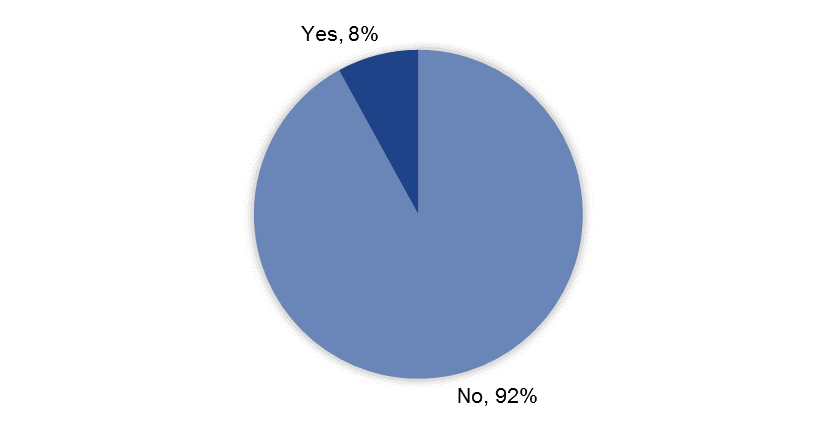
8% of providers stated that this data is used for external purposes, while 92% stated it is not. Two providers stated they used the data for sector benchmarking. Two other providers suggested the AUDE SMG Benchmarking tool uses this data.
Assessing the benefit and effort of collecting this data.
The chart shows that both the effort and benefit of collecting the data is low, however the benefit slightly outweighs the effort.

AUDE and the EMR Space Measurement Technical group have expressed support in removing this entity, as they do not use this data. Do you support this proposal? Please explain your answer.
The majority of providers are in support of this proposal, since they do not have a space charging system and do not use this data. A couple of providers were however not in support of this proposal. One provider reasoned there is a potential causal link between the use of space charging and the degree by which an institution can bear down on space requirement. Another provider explained that the item is used as a calculation within the AUDE SMG benchmarking tool which they do make use of. Another provider expressed it has been acknowledged by funding council research that space charging is a major component in effective space planning.
Entity: Specialist academic area - D14
- Fields: Research not offices specialist academic area (SMRESAA)
- Teaching not offices specialist academic area (SMTESAA)
- Total specialist academic area (SMSAA)
Is the data for this entity used internally by you as a provider (e.g. to analyse your estate, to generate KPIs)? (If yes, could you provide some examples of by whom and what for?)

43% of providers use this data for internal purposes, while 57% do not. Providers who do use this data, use it for purposes such as campus development and planning, space utilisation analysis and TRAC input. Examples of people who use this data include: Head of Estates, Projects Team and Deputy Estates Directors.
Is the data for this entity used for external purposes (e.g. for sector benchmarking by you as a provider, for data analysis by other external bodies) (If yes, could you provide some examples of by whom and what for?)
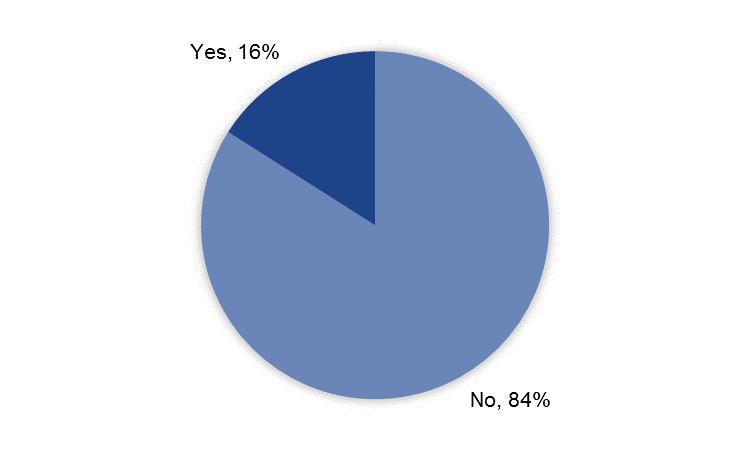
16% of providers stated this data is used for external purposes, while 84% stated it is not. Where the data is used, it is used for sector benchmarking, by external consultants for campus development and issued to AUDE for their annual EMR report.
Assessing the benefit and effort of collecting this data.
The chart shows the effort of collecting this data is moderate, while the benefit is low. Therefore, the effort outweighs the benefit.

Are there any fields you would add or remove to/from this entity? Please explain why.
A number of providers suggested removing this entity completely, as the fields are not relevant and they do not feel the data is comparable, since they feel it is not returned consistently. One provider suggested just removing Research not offices specialist academic area (SMRESAA).
Do you have any suggestions of how the guidance for the entity or fields could be improved? When suggesting improvements, please state which field you are referring to and link explicitly to the current guidance.
Of the providers who responded, the majority stated the definition of “specialist” needs better clarifying and a variety of examples provided.
We would like to provide some real-life examples of Specialist Academic Areas in the EMR guidance. We would therefore be grateful if you could provide us with some examples of what you are including as Specialist Academic Areas and why you are returning these as specialist (this may also help us to refine the definition).
We received a significant number of examples, which will help us to refine the definition and will be used where appropriate as examples in the guidance.
Accurate and Estimated Data
Could you please provide examples of when you would use accurate and estimate markers for your data within the EMR or internally at your provider?
There were some general trends from the examples given. For accuracy, several providers stated they could return space measurement and finance figures as accurate. For estimates: occupancy and frequency rates, the component parts of totals and functional suitability since it is based on human judgement.
Would you be able to return all your space measurement data as accurate?
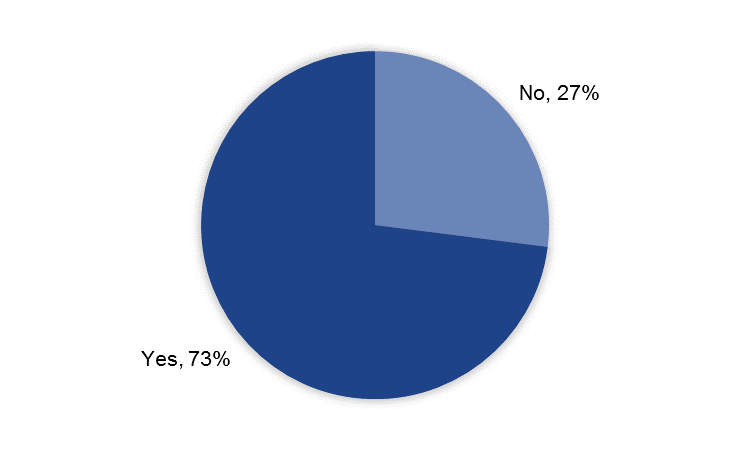
73% of providers stated they could return their data as accurate, while 27% stated they could not. For providers who stated they would have difficulties in returning data accurately, key reasons included: some definitions allow human judgement or are based on subjective assessment; some spaces do not have technical drawings; the estate is constantly evolving and so it is difficult keeping all measurements accurate.
Further comments
Providers gave a number of further comments, and these will be taken into consideration accordingly.
Summary and proposed actions
In light of the responses to the EMR Space Measurement Section Consultation we propose the following actions and items for consideration for each entity.
Entity: Gross Internal Area - D11
Feedback summary:
- This entity is used for both internal and external purposes by the majority of providers.
- The benefit also outweighs the effort of collecting it.
- There were concerns raised over the clarity of the commercial space field.
Proposed actions
- Clarify the definition of commercial space.
Entities: Net Internal Area - D12 & Method of floor area measurement - D13
Feedback summary:
- Measuring floor area on a room area basis has a slight majority in usage over the RICS NIA method.
- This entity is used by the majority of providers for both internal and external purposes, with providers believing the benefit of it does outweigh the effort.
- The majority of providers supported using a standardised methodology to measure room area on a Room Area basis, however there was recognition even by those providers in support of it of the cost this would impose on those providers not currently implementing this method.
- The majority of providers expressed that the revised definition of the commercial space helped to define the space better, but there were a number of points still to clarify on it.
- Field change suggestions included removing the Support NIA associated with catering (SMNIACS) space and combining teaching and research space into academic space.
- Guidance improvements expressed mainly related to clarifying which spaces are returned under which fields.
Proposed actions
- Use the suggested definition of commercial space and add further clarification.
- State in the guidance the preference for the Room Area basis methodology to be used for NIA, and for this to be standardised longer-term, however both methods can continue to be used for the time being.
Entities: Frequency rate - D16 & Frequency rate calculation - D45, Occupancy rate - D18, Occupancy rate calculation - D46
Feedback summary:
- These entities are used for internal purposes by the majority of providers, but only around a half of providers use these fields for external purposes.
- The benefit of these fields slightly outweighs the effort of collecting the data.
- Providers were particularly concerned by the consistency in which the data in these fields is collected, and many suggested better clarifying the methodology in the guidance.
- The majority of providers approved using a standardised survey-based methodology, but highlighted the high cost of implementing this.
Proposed actions
- State in the guidance the preference for providers to use a survey-based methodology, and it is the intention to move towards this longer-term.
- Longer-term, outline a standardised methodology to be used by providers to conduct frequency and occupancy surveys. In the meantime, refer to best practice outline by AUDE.
Entity: Space charging system - D43
Feedback summary:
- This entity is used neither internally or externally by the majority of providers.
- The majority of providers approved removing this field.
Proposed actions
Remove the space charging system field (approved by AUDE).
Entity: Specialist academic area - D14
Feedback summary:
- This entity is not used for internal or external purposes by the majority of providers.
- The benefit outweighs the effort of collecting this information.
- Some providers suggested removing this field completely, while others suggested clarifying the guidance. It was reasoned by several providers however that this entity is not used for lack of clarity, rather for lack of purpose.
Proposed actions
- While the feedback indicates that this field should be removed, AUDE have highlighted that specialist space is returned as part of TRAC and in this way does have a purpose. HESA will revise the guidance to highlight this.
Returning accurate and estimate data
Feedback summary:
- The majority of providers stated they could return accurate data.
- One reason provided for not being able to provide accurate data is that some definitions allow human judgement or are based on subjective assessment.
Proposed actions
- State the preference for data to be returned accurately. Longer-term we would like to move towards data only being returned as accurate, but this will be subject to a further review.
